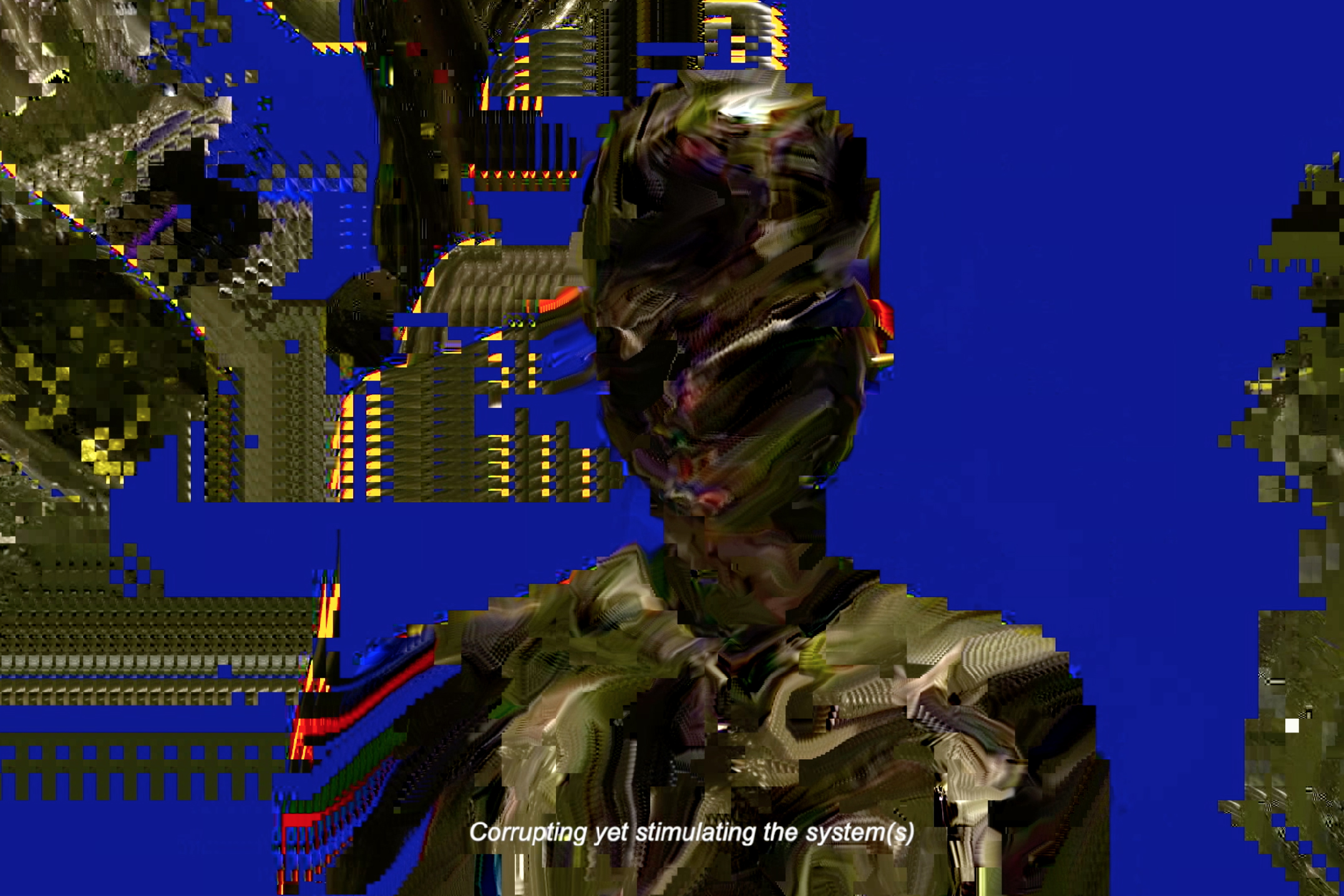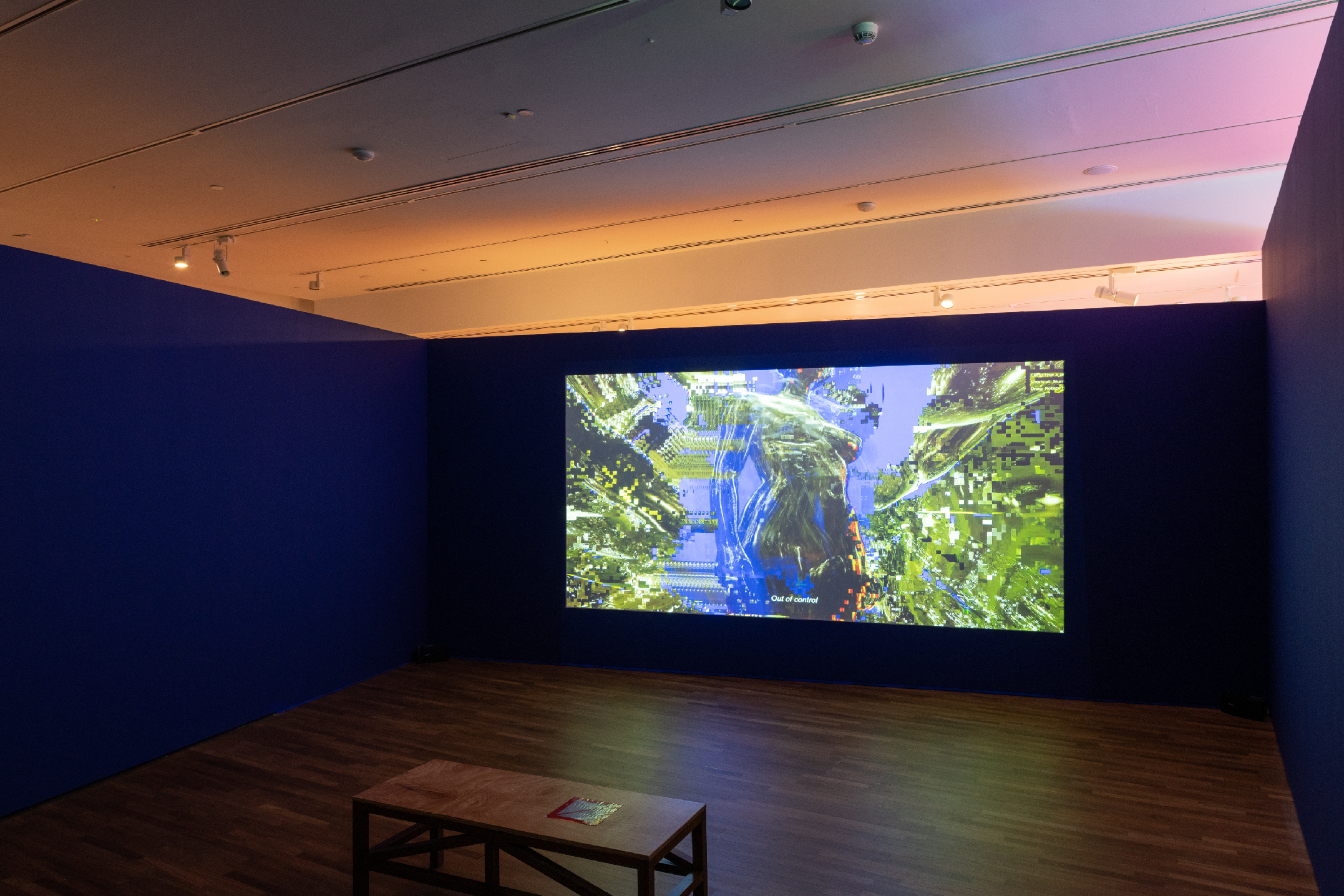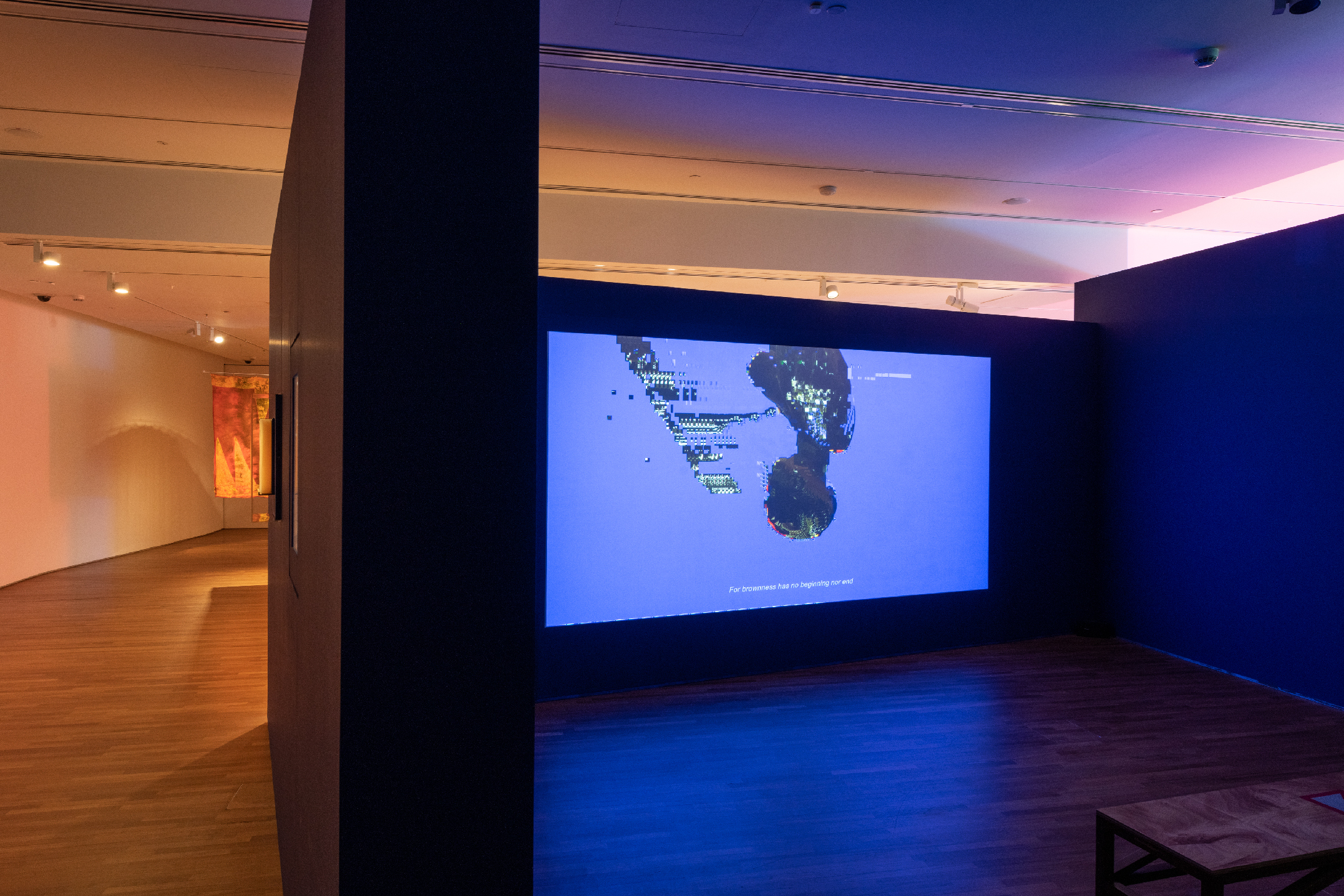



Single-channel video, (colour and sound), 4:30 min
An Exercise of Meaning in a Glitch Season
Curated by Syaheedah Iskandar
National Gallery Singapore
An Exercise of Meaning in a Glitch Season
Curated by Syaheedah Iskandar
National Gallery Singapore
The video work expands the possibilities for imagining brownness within a digital consciousness, reconfiguring and magnifying the presence of the generic, femme-presenting other through computer-generated imagery and data-moshing. It interrogates the ways in which marginalised identities navigate the matrix of digital representation, resisting the constraints of visibility dictated by dominant structures.
Rooted in glitch feminism, the work embraces error, fragmentation, and instability as a means of disruption. As theorist Legacy Russell articulates, the glitch operates as a refusal, an intentional break in the system that challenges the presumed coherence of race, gender, and identity in digital space. Here, data-moshing is deployed not merely as an aesthetic tool but as a critical intervention, shattering the visual language of racialised and gendered trauma. By breaking, morphing, fracturing, and compressing frames, the work destabilises the expectation of legibility, enacting an infinite failure to be read, categorised, or contained within the machine.
This refusal of fixity aligns with the glitch as a radical site of becoming, where brown, femme, and non-normative bodies are not assimilated into the algorithmic gaze but instead exist in a state of constant flux. In glitch feminism, to “fail” within digital infrastructures is to resist the forces of surveillance, capitalist extraction, and historical erasure that seek to discipline identity into consumable, recognisable forms. The work, through its embrace of error, insists on opacity, fluidity, and the right to be illegible, challenging the ways technology encodes, archives, and flattens difference into binary logic.
By distorting and reconfiguring digital representations, the video work gestures toward an alternate digital imaginary, one where marginalised identities do not seek hypervisibility within existing systems but instead claim space through disruption, rupture, and continuous transformation.
Rooted in glitch feminism, the work embraces error, fragmentation, and instability as a means of disruption. As theorist Legacy Russell articulates, the glitch operates as a refusal, an intentional break in the system that challenges the presumed coherence of race, gender, and identity in digital space. Here, data-moshing is deployed not merely as an aesthetic tool but as a critical intervention, shattering the visual language of racialised and gendered trauma. By breaking, morphing, fracturing, and compressing frames, the work destabilises the expectation of legibility, enacting an infinite failure to be read, categorised, or contained within the machine.
This refusal of fixity aligns with the glitch as a radical site of becoming, where brown, femme, and non-normative bodies are not assimilated into the algorithmic gaze but instead exist in a state of constant flux. In glitch feminism, to “fail” within digital infrastructures is to resist the forces of surveillance, capitalist extraction, and historical erasure that seek to discipline identity into consumable, recognisable forms. The work, through its embrace of error, insists on opacity, fluidity, and the right to be illegible, challenging the ways technology encodes, archives, and flattens difference into binary logic.
By distorting and reconfiguring digital representations, the video work gestures toward an alternate digital imaginary, one where marginalised identities do not seek hypervisibility within existing systems but instead claim space through disruption, rupture, and continuous transformation.
